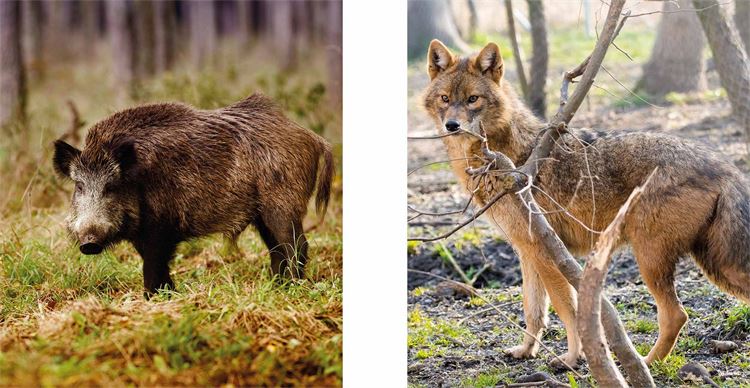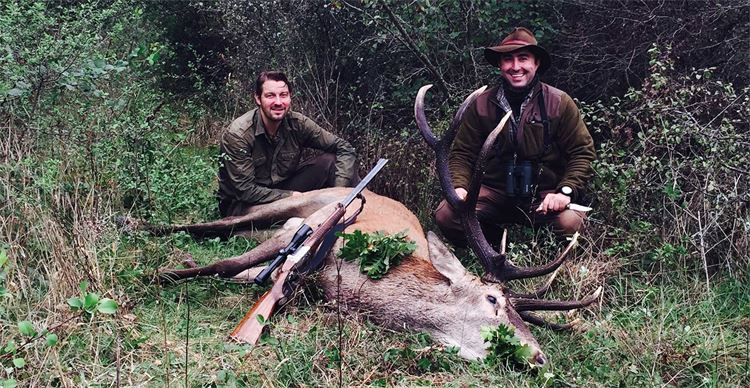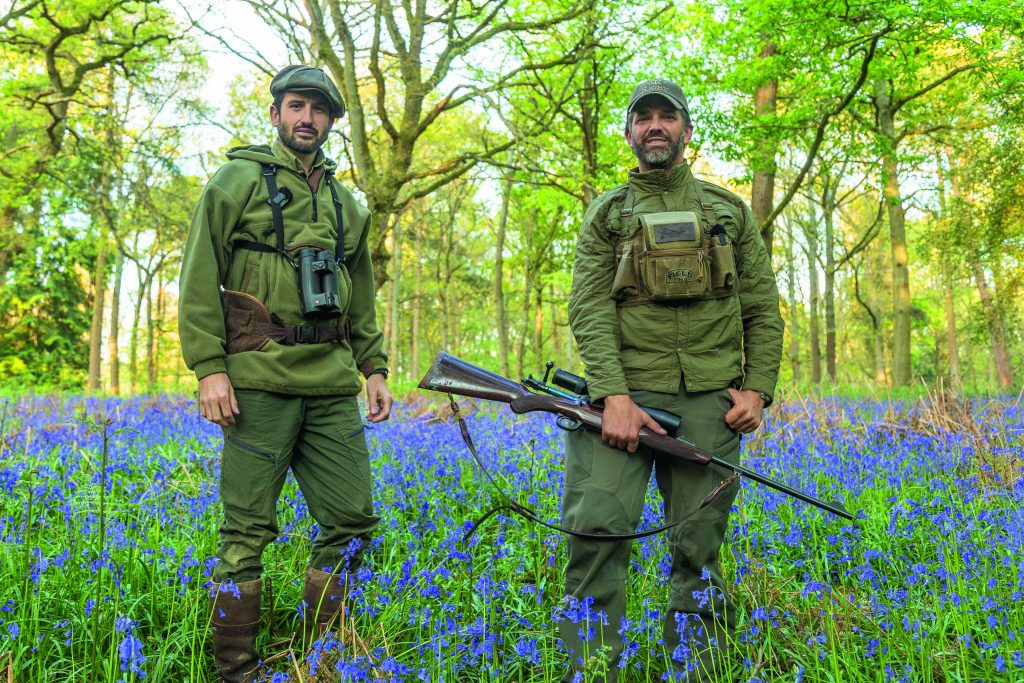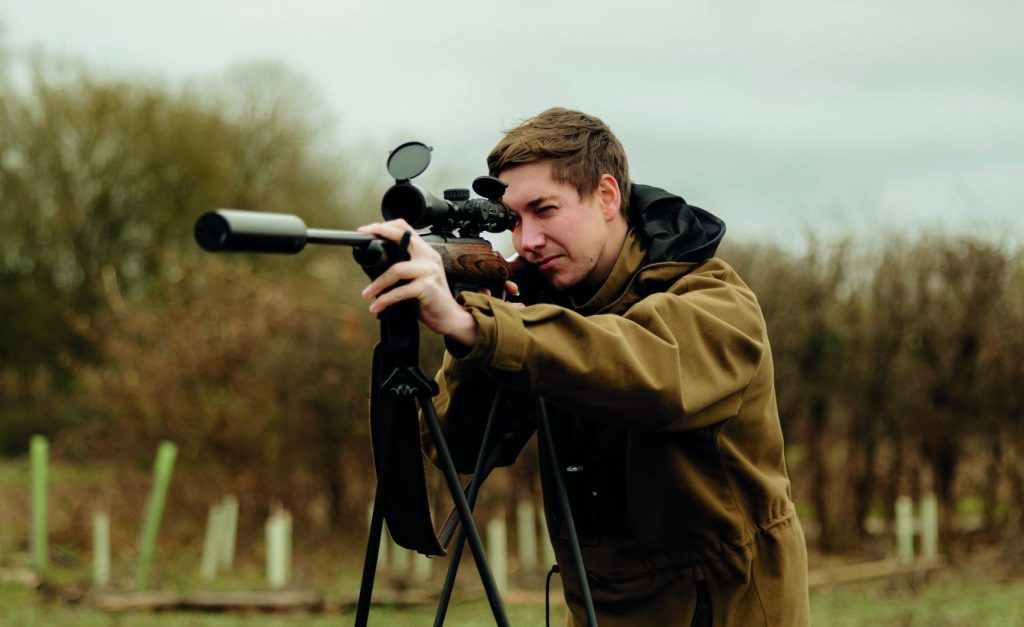Stalking huge red stags
To the Mecca of trophy red stags, southeast Bulgaria, for the hunt of a lifetime.
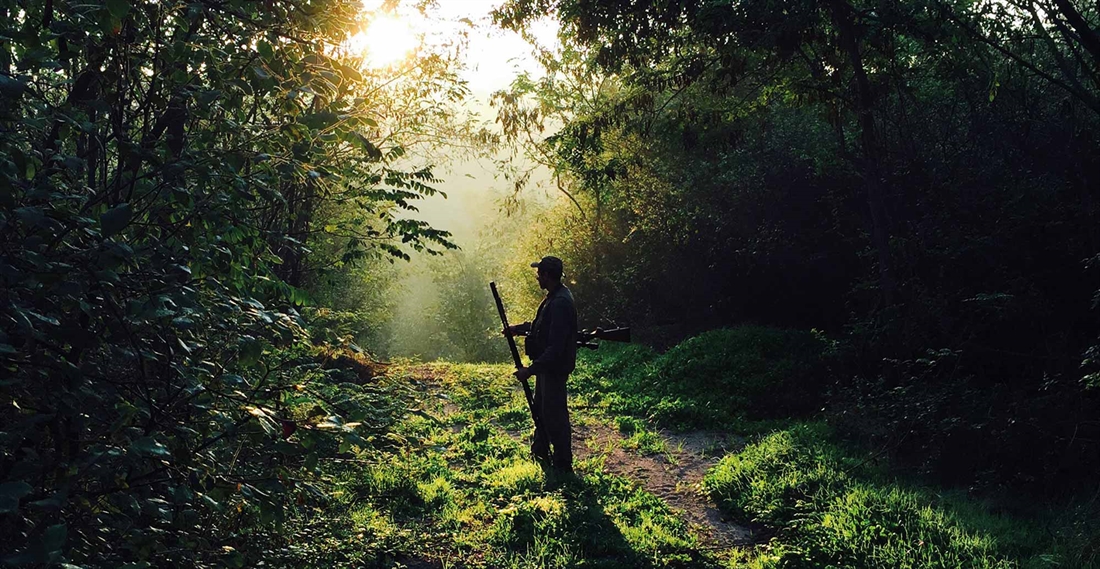
I am lying in a primeval Bulgarian forest, propped as comfortably as possible against the base of what I think is an oak tree. Beside me is the owner of the concession, and my host, Alkhas Khametov. We are waiting for dawn, and the chance to stalk my personal holy grail of European game: the red stag. I can see almost nothing, but the sounds of the forest allow me to imagine my surroundings: I hear game breaking branches underfoot, trees creaking in the breeze, and the constant bark of roe deer rutting in the distance. As we wait for first light, I can only guess what lies ahead…
We had arrived into Sofia airport at about nine the previous night, and after a four-hour drive had reached our destination: a hunting lodge near the town of Sredets, in southeast Bulgaria, 60km from the Black Sea. Dinner had been a very quick meal, washed down with a brandy nightcap. That morning we had woken at 4:30, and driven 20 minutes up the road into the forest estate before deciding to walk the rest of the way in. In the inky black of the predawn, we followed the road for another 30 minutes, until we found a spot comfortable enough to lie down to wait for sunrise.
The subspecies of red deer found in Bulgaria is the Balkan red (Cervus elaphus hippelaphus), and is much larger in both body size and antler weight than the Scottish red deer that we are accustomed to. Bulgaria has held the CIC World Record for red deer since 1990 – measured at 273.60 CIC points – a title it has held three times previously. A mature stag at the beginning of the rut weighs, on average, between 210 and 270kg, but can weigh as much as 340kg.
The males and females lead separate lives for most of the year, only congregating for the mating season. During the month-long rut, the stags can lose up to 25 per cent of their body weight due to the pressures of fighting, mating, and keeping their herd together. At the start of the season, the stags move to the forest areas, marking their territory by rubbing their antlers on trees, as well as scenting from their preorbital glands (situated just below the eye). They then compete fiercely for the right to breed, with the victors claiming their choice of the hinds. The hind is then covered by the stag, marking her with a strong scent from the stomach glands. This can take several attempts before she is impregnated, but the marking process warns off other stags, ensuring she will be left alone if she strays from the herd. In that area, an average stag will tend to mate with about three hinds, whereas the stronger ones might have five or six. The gestation period is about 250 days, with the calves being dropped around March/April. At the end of the rut, the males form bachelor herds and winter in the deeper parts of the forest, whilst the pregnant hinds form their own groups, sometimes as large as 70, and migrate separately.
In this part of Bulgaria, the land is divided equally between forested and farmed areas. Although the deer’s natural habitat is open fields, the majority of the flatlands are turned over to agriculture, pushing the stags onto less favourable ground. The hunting area itself is leased from the government, and covers an area of 4,000 acres. The undulating terrain is covered with managed deciduous forest, providing a sustainable supply of timber as an additional source of income. The area is unfenced, allowing game to drift in and out, depending on the season. Other species that can be found here include roe deer, wild boar, wolf, wildcat, and golden jackals. The forest is also home to gamebirds such as woodcock, snipe and rock partridge (Alectoris graeca).
As dawn broke, it unveiled the forest in front of me, and I could now begin to see my surroundings. We remained lying on the forest floor, listening as the birds began to chirp and the wind started to rustle the trees overhead. About half an hour after first light, we heard the deep bellow of a red stag calling from the next valley over. We waited, and then another roar came from behind us, further away but very clear. Checking the wind direction, Alkhas decided that we would head towards the first call, setting off along a trail which led to an old logging road. As we crested the hill the stag’s call was closer, but he was hidden in a thick patch of scrub. As we circled for a closer look we got a brief glimpse through a break in the bushes, and decided that he was not the one for us. “He is big but still a bit young,” whispered Alkhas. “I would like to leave this chap and see what else is around.”
We slowly made our way back to higher ground, keeping the wind in our faces, and pausing every couple of minutes to listen for the calls of other stags. As we came to the crest of the hill a strong, pungent aroma filled my nostrils. A little way off to my left, a small tree had been heavily rubbed and scarred by a deer marking its territory. The marks were obviously fresh, so we moved slightly downhill to a forestry road where the trees thinned, and sat down to survey the valley below us. A roar echoed across from the opposite slope, and we caught glimpses of some hinds scattered over the valley floor. Alkhas gently tapped me on the shoulder, and pointed to the treeline some 250m away where a stag was just emerging. I raised my binoculars and watched him as he began to move backwards and forwards, grunting and showing himself. Even at that distance, he looked absolutely enormous.
To my disbelief, my heart started pounding. There I was, an African professional hunter, and I was struck down by buck fever! I had not even shouldered my rifle, and my mind was racing as I tried to control my quickening pulse and ragged breathing. It also felt such an unusual situation, to be the client rather than the guide, with Alkhas putting the sticks up and preparing me for the shot. I rested Alkhas’s 7x65R break-open rifle on the sticks and brought the crosshairs onto the stag’s shoulder as we waited for him to move downhill, into range. However, my heart was thumping, the reticle dancing over the stag’s back. Alkhas tapped me on the shoulder to take the shot, but still I couldn’t settle the crosshairs. He leaned forward again. “He’s seen us, you have to shoot now or he’s going to bolt!” he said, urgently. I made a snap decision, lifting the rifle from the sticks and lying prone on the ground. My body settled, allowing me to steady the crosshairs as I slowly took up the pressure on the trigger.
A tremendous crack rang out as the rifle barked, followed by a thud as the 170gr bullet hit home. The stag fell, then stood up and ran off into the trees. “Well done,” said Alkhas as he clapped my shoulder. “You hit him well.”
With the remaining hinds scattered into the trees, we sat and waited awhile before making our approach. Alkhas took the opportunity to measure the distance with his range-finder: 180m, longer than either of us would have liked, but we were both happy that I’d placed the shot properly.
After a short time, Alkhas tapped my arm, and we set off down the hill. As we reached the point where we had last seen the stag running, I noticed a good blood trail, both bright and dark in colour, a clear indication of a killing shot. Forty metres further on, we found the great beast where he had fallen.
It is often difficult to describe to people the cocktail of emotions you feel when a hunt comes to an end, but as I walked up to him I felt both a great sense of excitement coloured by relief, and regret. I asked Alkhas if I could have a moment alone to pay my respects. He placed the ‘last bite’ – a small oak branch – in the stag’s mouth, before moving quietly off into the forest. As I stood beside the stag, I noticed scars along his neck, and that one of his bey tines had been snapped clean off, all bearing witness to battles he had fought for his right to sire the next generation. Later, as we waited to be collected, Alkhas and I noticed that the stag’s antlers were also unusual, each main beam having formed a single long tine, rather than a crown. The forest master, inspecting our deer later at the hunting lodge, confirmed that this made him a good choice – the lack of crowns would have prevented him locking antlers effectively, making him more likely to injure his opponents in the rut.
That night, after a more leisurely dinner, Alkhas and I sat with the forest master, discussing plans for the concession, and the future of hunting in Bulgaria. The Bulgarian deer population is estimated to number between 16,000 and 18,000, and, as with many countries, poaching is the biggest problem facing conservationists, together with the competing demand for arable land. A recent paper noted Bulgaria as one of a number of Eastern European countries where deer populations had declined between 1984 and 2002. However, with careful land management in recent years, this appears to have been reversed. Alkhas is very aware of the responsibilities that come with his hunting rights, only allowing two deer to be taken per year. Given Bulgaria’s strong hunting tradition, careful land management, and conservation of the population, their reputation for record-breaking deer seems assured for the future.
Related Articles
Get the latest news delivered direct to your door
Subscribe to Fieldsports Journal
Elevate your experience in the field with a subscription to Fieldsports Journal, the premium publication for passionate country sports enthusiasts. This bi-monthly journal delivers unparalleled coverage of game shooting, fishing and big game across the UK and beyond.
Each issue offers a stunning collection of in-depth features, expert opinions and world-class photography, all presented in a timeless yet contemporary design.
Save 10% on shop price when you subscribe, with a choice of packages that work for you. Choose from Print & Digital or Digital only with each journal delivered directly to your door or via the app every other month, plus access to past issues with the digital back issue library.







